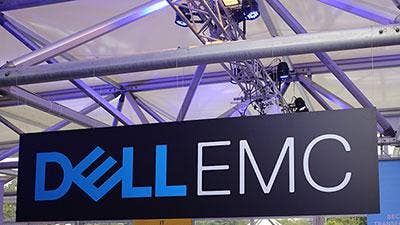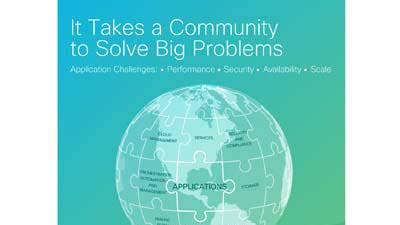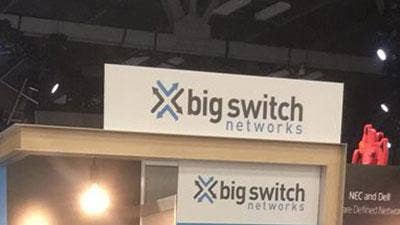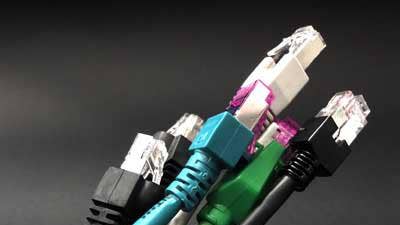Big Switch CMO Holzrichter On New Big Cloud Fabric Solution; Dell EMC, VMware, HPE Partnerships; And Doing Battle With Cisco ACI In The Hyper-Converged Market
Big Switch's Gregg Holzrichter speaks with CRN about the company's Cloud Fabric software-defined networking switching fabric updates and how partners can benefit from increased flexibility.

Fabric Of Our Lives
Big Switch Networks has fired a shot across Cisco Systems' bow by bringing support for VMware vSAN, Dell EMC ScaleIO and Nutanix hyper-convergence solutions to its Big Cloud Fabric software-defined networking switching fabric.
The move brings simplicity and visibility to the networking portion of hyper-convergence that Cisco's ACI platform can't match, according to Big Switch CMO Gregg Holzrichter. The strategy also leverages Big Switch's close relationship with Dell EMC, which resells Big Switch and VMware, whose vSAN hyper-convergence platform is one of the building blocks of the hyper-converged infrastructure (HCI) market.
Big Cloud Fabric can be deployed on Dell EMC switching hardware, as well as Edgecore white-box switches and HPE's Altoline family of switches.
Holzrichter said that until now, networking has been an afterthought in HCI. But as HCI deployments get bigger, traditional networking, and even Cisco ACI, have stumbled, he said. Big Cloud Fabric gives admins a clear view into the network while allowing for rapid deployment, simple upgrades and constant visibility, according to Holzrichter. On top of that, he said, Big Cloud Fabric will lower capital expenses for customers.
The Big Cloud Fabric offering puts more ammunition in partners' bags, too, Holzrichter said. "If a channel partner has a relationship, or wants to give their customers choice, they can offer our solution based on HPE, based on Dell EMC, or on white-box switches. That's a nice flexibility story," he said.
What follows is an edited excerpt of Holzrichter's conversation with CRN.

Big Cloud Fabric seems like a deepening of the relationship with Dell EMC. They already resell Big Switch, right?
They do resell Big Switch. Now that Dell owns EMC and VMware, we give meaning and differentiation in networking for Dell. With VMware going to market and deploying NSX, it's even better if you deploy that on Dell switches rather than Cisco, for example. There's some nice internal reinforcement there on the go-to-market. We also support the vSAN hyper-converged route to market.

How do Big Switch and VMware's NSX software-defined networking solution live side by side?
You can think of NSX as an SDN overlay. VMware owns the vSwitch and the virtual network. You still need a physical network for NSX. A lot of people have deployed NSX on Cisco or Arista. We've been invited by the NSX business unit and we've done integration work so that we have seamless integration into NSX, so we are the SDN underlay, the physical Layer 2, Layer 3 network, and we plug into the NSX overlay. A lot of companies look at NSX and they want to deploy NSX because you have some interesting security and micro-segmentation policies that NSX gives you. We actually give you a lower-cost alternative on your physical networking gear because we're deploying on Dell industry-standard switches. They're very price-competitive compared to the Ciscos and Aristas of the world.

How can you convince solution providers to place their bets with Big Switch rather than Cisco ACI?
Channel partners really value having a differentiated networking solution in their bags. Big Switch has this very modern data center switching solution, but we also have a second family of products, which is network monitoring and visibility. We have very tight integration with VMware, with Red Hat. We have one of the most appropriate and production-ready solutions for container networking, and that's very differentiated. We also have very good flexibility in terms of the hardware we support. If a channel partner has a relationship, or wants to give their customers choice, they can offer our solution based on HPE, based on Dell EMC, or on white-box switches. That's a nice flexibility story.

How is this different from the integration of traditional networking technology into HCI?
The state-of-the-art today in most networks is lots and lots of complexity, CLIs [command-line interfaces] that haven't changed since the '90s. You have CCIEs and lots of very expensive network engineers to manage these very brittle, non-nimble networks. As more and more organizations want to get to a more dynamic, digital data center to keep up with the demand of the business units, they're used to being able to go to the cloud and have very agile, quick resources at their fingertips. We're making the networking portion of your on-premise data center as efficient as if you were in the cloud. It's easy to manage, easy to make changes. You're seeing that entire set of leaf-and-spine switches as if it were one switch.

Do you see this as a step toward or into intent-based or outcome-based networking?
It makes the management really easy, and allows you to get to this concept of intent-based networking or autonomous networks where you're working in an orchestrator and somebody says, 'I want to give more resources to my ERP application because it's the end of the month, press a button and make it so.' We take that and make it happen on the networking side. We can make sure the application has all the resources that it needs. It's a very different operational model than what traditional networks deliver.

So, in addition to being a competitive play against Cisco in HCI, it's a shot at their intent-based networking strategy?
We get compared to Cisco quite a bit, and Cisco ACI is probably the solution we go head-to-head against in bake-offs. One of the nice things we're seeing is because of our operational simplicity – we've really designed our solution to get up and running in hours, not weeks – we've had multiple customers cut over from their Cisco environment and decide to deploy on Big Switch and Dell. We had a municipality doing a municipal modernization project and gave us a month to cut over. After one day it was done, and the municipality's manager was asking, 'How did you do that?' Because we've made it so automated and easy, it's become a completely different experience. It's a single click to add in a new spine switch, or an additional switch into the fabric. It's automatic provisioning of your fabric. It's automatically adding servers as they're added to the racks, keeping track of containers as they're added through analytics.

What is it about Cisco ACI that presents challenges to HCI environments?
ACI has some of its own specific challenges in terms of workload characteristics. In order to get started with ACI, your networking team has to characterize every single specific application. There's a lot of heavy east-west traffic across an HCI node, and once you start getting into eight or 10 nodes and above, you can really start to have performance challenges for your network. With Big Switch you can very easily horizontally scale out. You can start with a single rack, add additional network resources as you grow your HCI cluster. We do a lot of that, and on an automated basis; it's very simple to deploy. The concept of zero-touch networking and upgrades, when you see what traditional networking people have to do, the list of actions and items they have to manage to get an environment stood up is long. With Big Switch it's three clicks and you're good to go. It's a different experience.

What does that mean for customers in real-world situations?
Compared to traditional networking, Big Switch can get up and running 16 times faster. We can deploy applications four times faster. When you compare the cost of acquiring traditional Cisco or Cisco ACI, we're 40 [percent] to 50 percent less on a Capex basis, and on an ongoing basis, the operational savings are really dramatic. Instead of a CCIE having to hunt and peck through physical switches in a data center to figure out if there's an outage or a performance problem, we have built-in fabric trace capabilities. It actually shows you how the packets are traversing from the VM to the spine switch and back to see if there is an outage and getting you to resolution 12 times faster. We think bringing modern networking to HCI is really interesting. A lot of the HCI deployments are at the edge of the data center. They start small and then they grow. It’s a great opportunity to introduce new networking opportunities.

What makes this the right time for Big Switch to make a play in the hyper-convergence market?
There have been all kinds of innovations in compute and storage, but networking has really been lagging behind. Cisco has a really large percentage of the market. They've done a really good job of training networking folks. As a result, you haven't seen as much innovation and change in the networking stack compared to storage. With the advent of these big hyper-scale players like Google and Facebook and Amazon and LinkedIn and others, they didn't go down that path of just buying more Cisco. They architected a different way of doing their networks because they had huge scale problems they needed to cope with. We share a lot of DNA with the Google network team.

Have you managed to take some of the complexity out of the networking side of hyper-convergence?
Google has created this concept of a leaf-spine architecture with a central SDN controller. As a result, they've been able to become incredibly efficient in their network. One networking admin can manage thousands of switches. What we've done is we've taken those same design principles and put them into enterprise software that any organization can benefit from. You don't have to go out and hire a bunch of really smart network Ph.D.s. It's just off-the-shelf software that runs on your preferred hardware, whether that's from Dell EMC, or HPE or white box. As a result, you can start small, with a particular workload, and see what it's like to do modern, next-generation networking.

Why has Big Switch gone down the path of supporting particular hyper-convergence players?
It's a nice insertion point for companies to experience modern networking along with this modern, efficient hyper-converged compute and storage nodes. We've been doing a fair amount of work with some of the leading HCI players and having lived in a couple of different software-defined storage companies. As a marketer, we never talked about networking. It was always about data services, it was about flash, or capacity or efficiency. The HCI community is missing a whole leg of the stool. You've got compute and storage covered, but the whole conversation about networking is an afterthought, so we've worked hard to integrate into Nutanix and [VMware] vSAN and [Dell EMC] ScaleIO. We're partnering now with HPE, and they've acquired SimpliVity. As you look at getting more efficient with your HCI deployments, the typical deployment used to be three nodes. Now we're seeing much larger deployments, more than eight nodes, and you're seeing some real network performance challenges. If you're not careful with your architecture, you can have some real performance degradation.

How has Big Switch found an opening for itself in that market?
We took this next-generation networking capability that we have and added it to use cases. We started with OpenStack. We've worked with service providers like Verizon and others. We'll be doing a lot more partnering with VMware. We integrate really nicely with vCenter, their management console. Our SDN controller has a very nice API integration with vCenter. We present the entire physical network right up into vCenter and make it really easy to manage your network.

What's Big Switch's container strategy?
We've done a whole lot of work on containers. This is one of the most exciting use cases that really highlights why our technology and architecture are different. As you look at these very dynamic container environments where businesses want to spin up 50 containers very quickly and then maybe kill them an hour later, they have a much more ephemeral, short-lived lifespan than virtual machines. We used to have bragging rights at VMware about a VM that's been running for two years. Containers are completely different, and traditional networking just can't keep up with containers. If you have to provision each one of those containers for your network in the traditional way, you just can't keep up. Having an automated fabric that keeps track on a per-container basis, provisions each specific container automatically and then kills the containers and prunes all those network resources automatically is a very nice story in terms of having an automated, easy-to-manage network.

What's your focus in HCI? What problems are you trying to solve?
What we're focusing on is being the ideal networking fabric for HCI. As you think about traditional networking, there's a lot of provisioning specific networks for each individual machine. There's a lot of separation of work in a data center. The admins and the storage folks will be working in a hyper-converged environment; they can get you the VM and provision software-defined storage in minutes, but they'll have to file a net-ops ticket that can take hours or days to get a networking geek to push a VM live into the network. What we bring to this story is a very nice integration and automation. We're sort of the 'easy button' for networking for HCI. You can pre-configure and give your admins access and the ability to push VMs live into the network themselves directly from vCenter. We have the ability to detect new HCI nodes in the cluster, automatically creating Layer 2 networking segments, giving you visibility through these integrations.

It seems like that visibility is key for networking in an HCI environment.
The age-old question is, 'Is it the network's fault?' Now, they can see themselves. They can see a fabric trace that shows you exactly if there's an outage physically, or logically. It gives you this really nice improvement in communication between teams, but also workflow, which is kind of the whole promise of software-defined data centers.